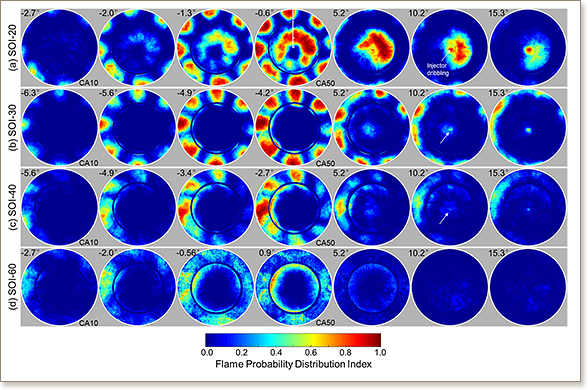Experimental study on the effects of spray-wall interaction on partially premixed combustion (PPC) and engine emissions
Q. Tang, Y. An, V. Raman, H. Shi, J. Sim, J. Chang, G. Magnotti, B. Johansson
Energy & Fuels, 33, 6, pp. 5673-5681, (2019)

We investigated the detailed spray–wall interaction in partially premixed combustion (PPC) in an optical engine with a wide-angle injector at low engine load. The fuel-trapping effect of the piston top-land crevice was visualized by fuel-tracer planar laser-induced fluorescence (PLIF) for the first time. In agreement with the fuel distribution shown by PLIF, the combustion region first moves into the squish region and then tends to move back to the piston bowl when advancing the injection timings. Results indicate that a considerable portion of the fuel is trapped in the piston top-land crevice for the cases with injection timings at −30° (SOI-30 case) and −40° (SOI-40 case) crank angle after top dead center. The SOI-40 case with earlier injection timing presents a backflow process of the trapped fuel from the piston top-land crevice to the squish region. However, there is not enough time for the fuel vapor to flow back before the start of combustion for the SOI-30 case, resulting in a relatively lower fuel–air equivalence ratio in the squish region and thus higher CO emission than that of the SOI-40 case. This study provides insights into the fuel distribution characteristics in the piston crevice and the potential effects on the engine emissions under PPC condition.